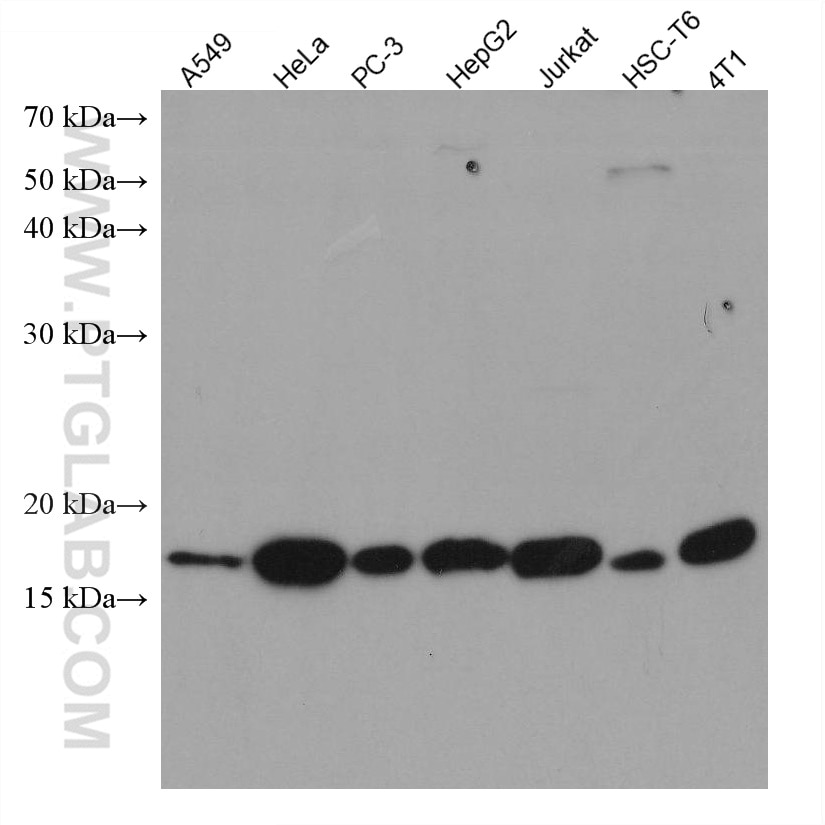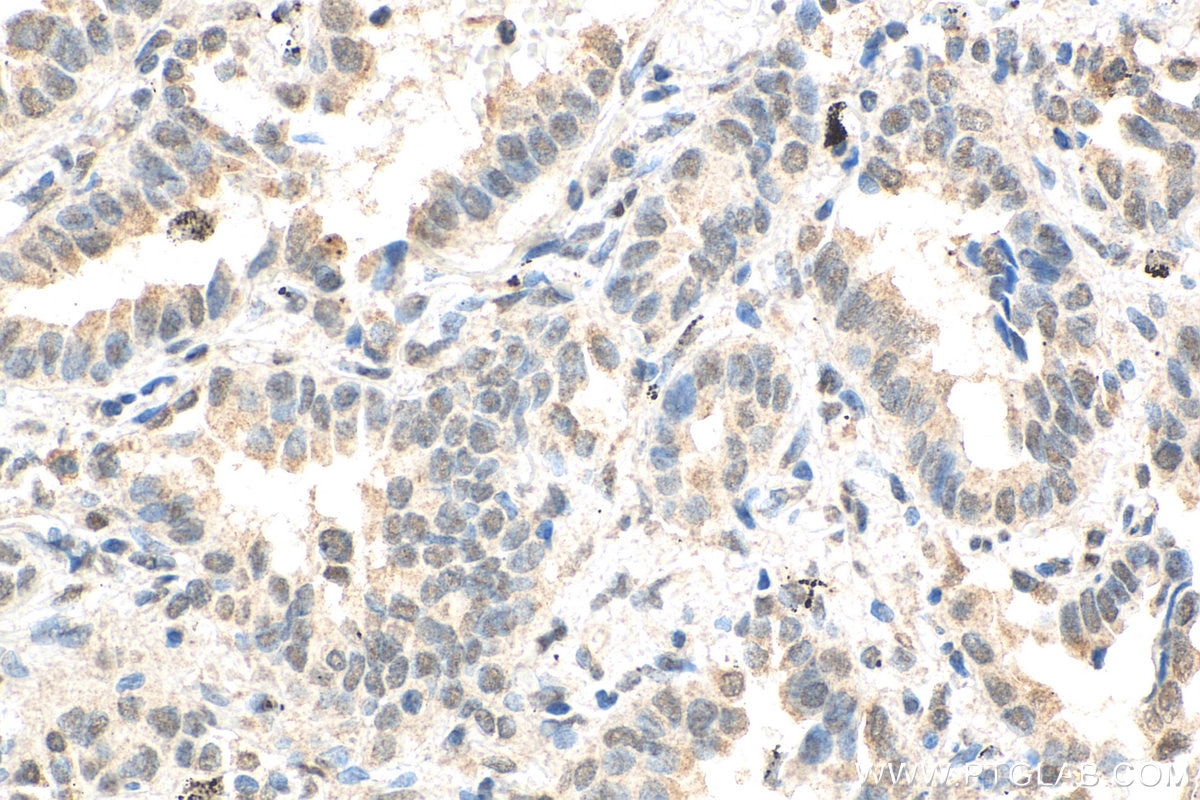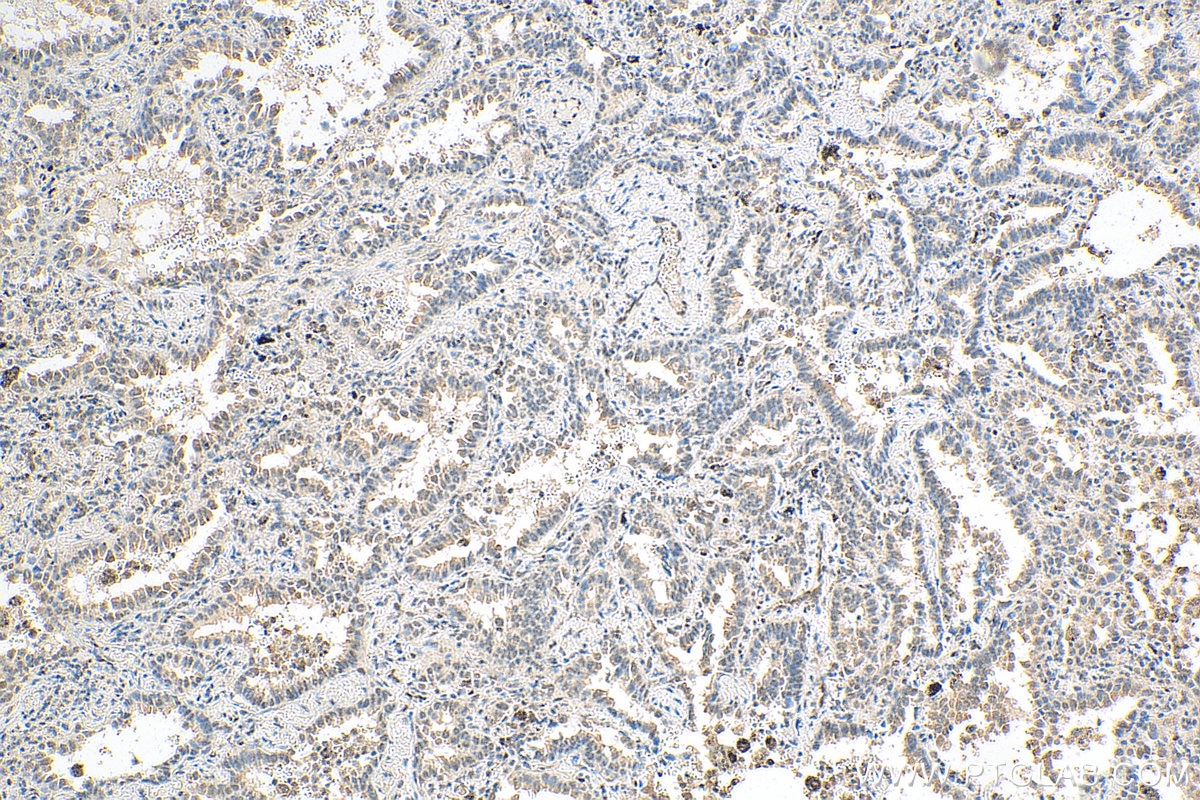Anticorps Monoclonal anti-ID1
ID1 Monoclonal Antibody for WB, IHC, ELISA
Hôte / Isotype
Mouse / IgG1
Réactivité testée
Humain, rat, souris
Applications
WB, IHC, ELISA
Conjugaison
Non conjugué
CloneNo.
1H3G11
N° de cat : 67827-1-PBS
Synonymes
Galerie de données de validation
Informations sur le produit
67827-1-PBS cible ID1 dans les applications de WB, IHC, ELISA et montre une réactivité avec des échantillons Humain, rat, souris
| Réactivité | Humain, rat, souris |
| Hôte / Isotype | Mouse / IgG1 |
| Clonalité | Monoclonal |
| Type | Anticorps |
| Immunogène | ID1 Protéine recombinante Ag13359 |
| Nom complet | inhibitor of DNA binding 1, dominant negative helix-loop-helix protein |
| Masse moléculaire calculée | 16 kDa |
| Poids moléculaire observé | 18 kDa |
| Numéro d’acquisition GenBank | BC000613 |
| Symbole du gène | ID1 |
| Identification du gène (NCBI) | 3397 |
| Conjugaison | Non conjugué |
| Forme | Liquide |
| Méthode de purification | Purification par protéine G |
| Tampon de stockage | PBS only |
| Conditions de stockage | Store at -80°C. 20ul contiennent 0,1% de BSA. |
Informations générales
ID (inhibitor of DNA binding) proteins contain a helix-loop-helix (HLH) motif and regulate tissue-specific transcription within several cell lineages. They do not bind DNA directly, but inhibit lineage commitment by binding basic helix-loop-helix (bHLH) transcription factors through their HLH motif. ID1 proteins lack a basic DNA-binding domain but are able to form heterodimers with other HLH proteins, thereby inhibiting DNA binding. ID proteins contribute to cell growth, senescence, differentiation, and angiogenesis. Inhibitor of differentiation or DNA binding-1 (ID1) interacts with the transactivation domain of p65 (p65TAD) both in vitro and in vivo. The molecular weight of ID1 is about 18 kDa.







